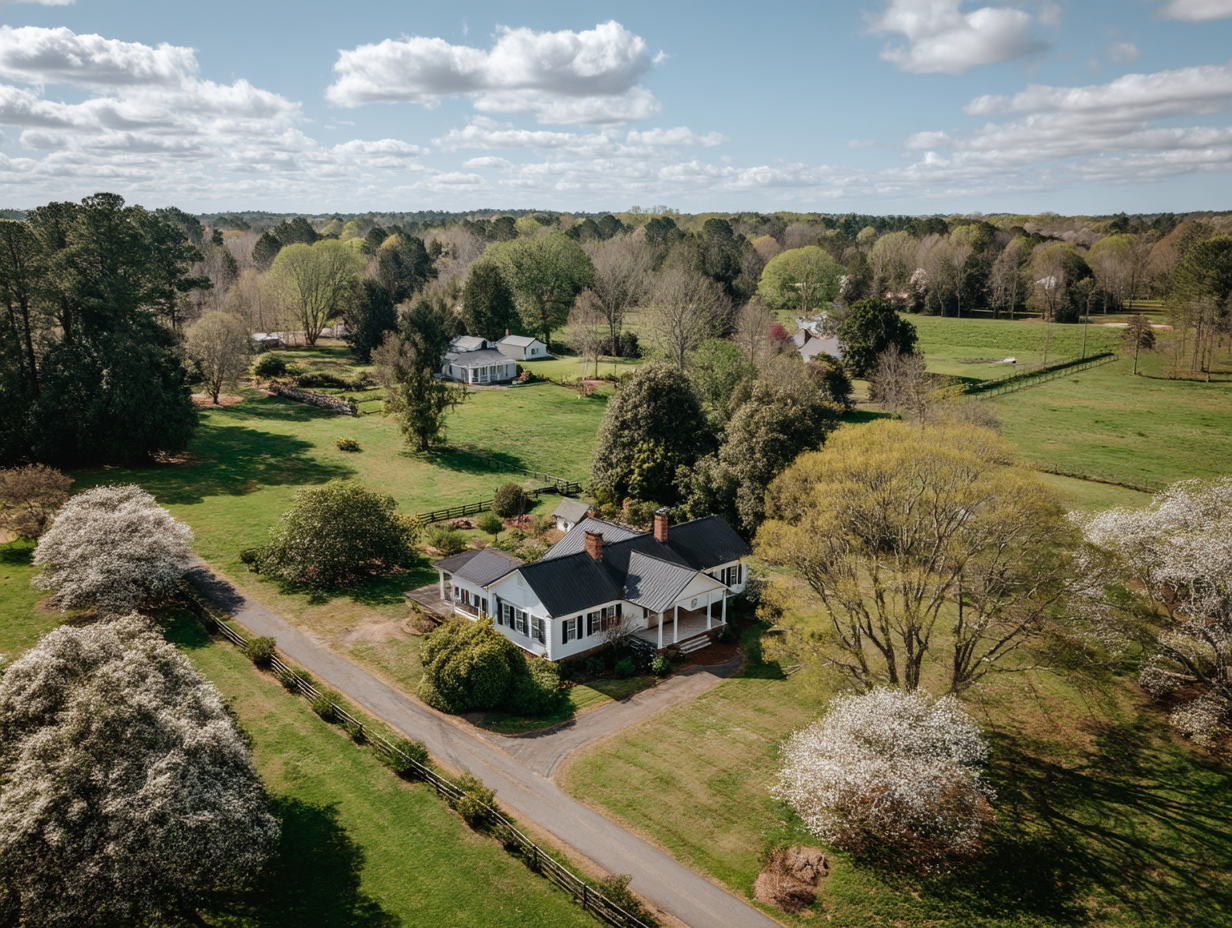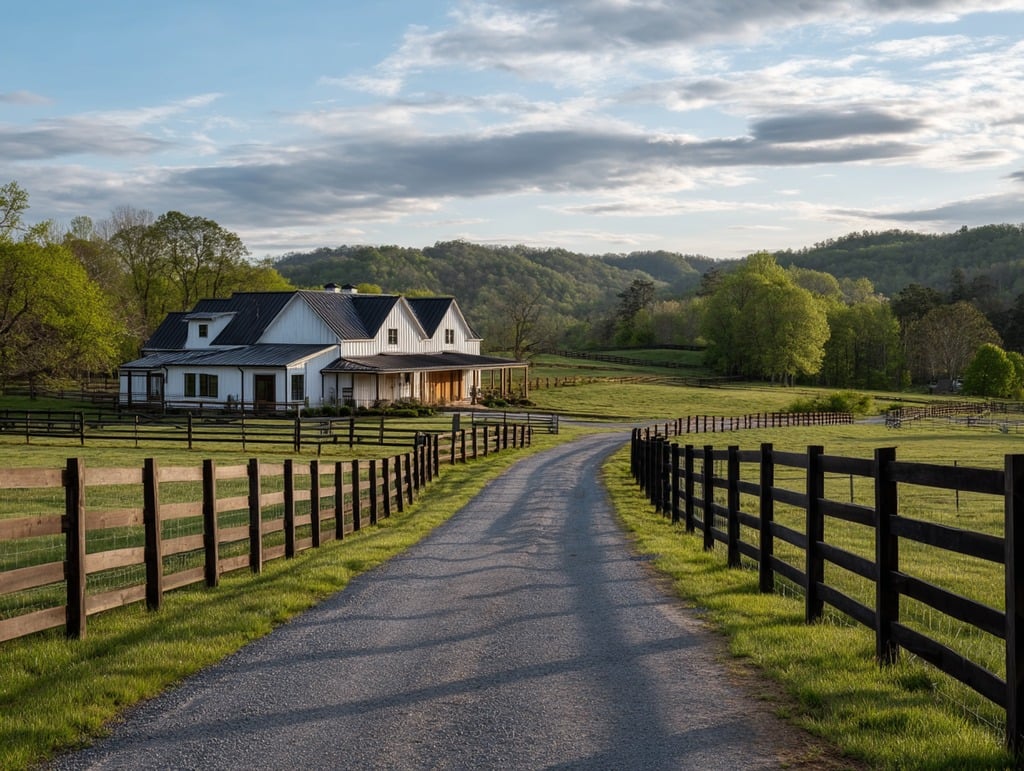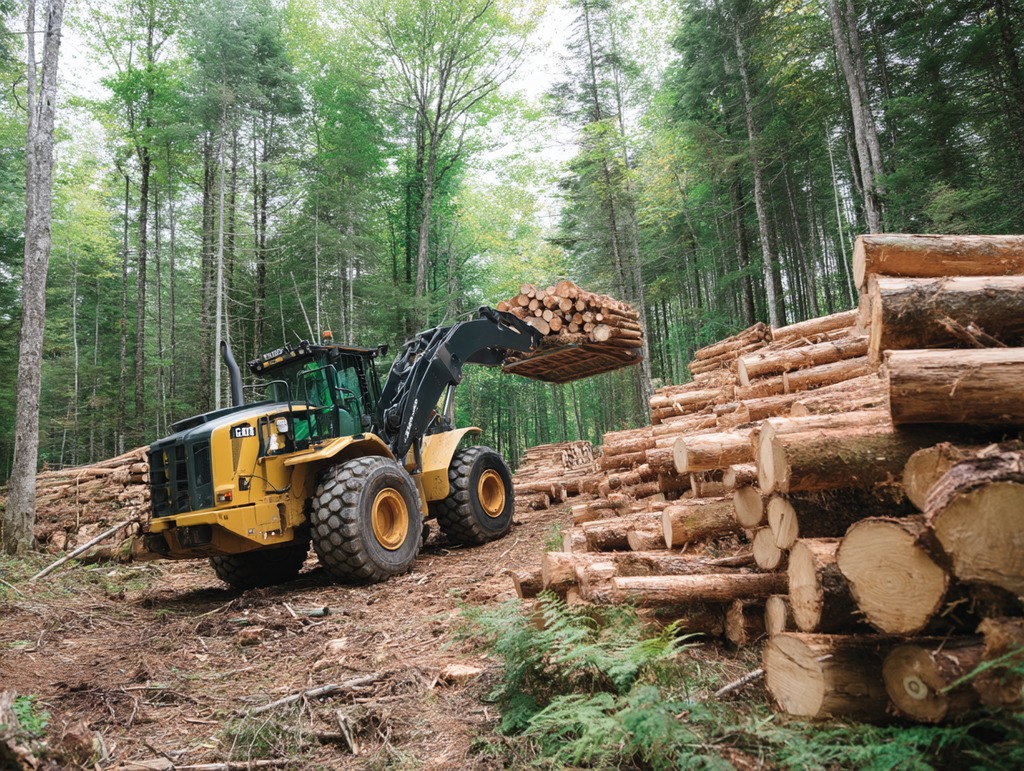For many homebuyers, the dream isn’t just a house—it’s land. Whether it’s a few acres for privacy, a stretch of pasture for horses, or wooded trails for weekend hikes, owning property with land opens the door to a lifestyle that a standard lot in a subdivision simply can’t provide. But that dream comes with a unique set of responsibilities, expenses, and long-term considerations that are often overlooked by first-time land buyers.
Before you sign on the dotted line, it’s critical to understand what you’re getting into. Purchasing a home with land isn’t just about the square footage of the house or the quality of the finishes inside—it’s about everything that surrounds it, above it, and below it. From zoning laws and septic systems to development potential and land maintenance, here’s what you need to know before buying a home with acreage.
1. Septic Systems and Well Water: What Lies Beneath Matters
If you’re buying a rural property or even just something outside of municipal limits, chances are it won’t be connected to a public sewer or water supply. That means you’re dealing with a septic system and likely a private well.
What is a septic system?
A septic system handles the wastewater for homes not connected to a municipal sewer. Wastewater flows into a buried tank, where solids settle, and liquids move into a drain field for further filtering. While it sounds simple, these systems require proper design, maintenance, and usage to function effectively.
What you need to know:
-
Inspection is a must. Always get a professional septic inspection before buying. Repairs can cost thousands.
-
Know the size and age. Septic systems have a lifespan—usually 20-30 years. Ask about the tank capacity and last pump date.
-
Be mindful of what goes down the drain. Septic systems can be sensitive to items like grease, wipes, and heavy cleaners.
-
Room for replacement. Ensure there’s enough space on the property to install a new system in the future if needed.
What about well water?
Private wells can provide excellent water quality, but it’s up to the homeowner to maintain it.
-
Test the water. Check for contaminants like coliform bacteria, nitrates, arsenic, and heavy metals.
-
Pump age and condition. A well pump can last 8–15 years. Replacing it isn’t cheap.
-
Well depth and yield. A deeper well can tap into more reliable aquifers but costs more to drill and maintain.
2. Zoning Laws and Land Use Restrictions: Read the Fine Print
Just because land looks open and free doesn’t mean you can do whatever you want with it. Zoning laws, local ordinances, easements, and deed restrictions can significantly limit how you use your property.
Common zoning categories include:
-
Residential (R): Most homes fall here, with subcategories for single-family, multifamily, or mobile homes.
-
Agricultural (AG): May allow farming, livestock, or low-density housing—but not always commercial use.
-
Conservation or Protected (C): Often limits clearing, building, or altering the landscape.
Things to check:
-
Future plans. Local governments publish comprehensive land use plans. Will a future highway run behind your property? Will that wooded field next door become a new subdivision?
-
Easements and rights-of-way. Utility companies, neighbors, or municipalities may have legal access to parts of your land.
-
HOA restrictions. Even in rural areas, some parcels fall under homeowners’ associations with strict rules.
-
Building limitations. Want to build a barn, guest cottage, or workshop? Check if zoning allows it.
Bottom line: Always request a copy of the property’s zoning designation and ask your agent or a local planning department to walk you through what it means.
3. Access and Utilities: Are You Really Off the Grid?
The romantic idea of a home on land often involves some level of seclusion—but with that comes infrastructure challenges.
Access roads:
-
Is the road public or private? If private, who maintains it? Will you be responsible for plowing or repairs?
-
Is there a legal right of way? Just because you can drive to the property doesn’t mean you have legal access. Make sure access is recorded in the deed.
Utilities:
-
Electricity and internet: Can you get high-speed internet, or will you be reliant on satellite service? Some rural properties require costly extensions of power lines.
-
Trash collection: In rural areas, you may need to haul your garbage to a county dump.
-
Emergency services: How far is the nearest fire station or hospital? In remote areas, this could affect insurance rates—or even safety.
4. Maintenance: More Than Just Mowing the Lawn
Land is beautiful, but it’s not maintenance-free. In fact, large properties often require more work than buyers anticipate.
Common land maintenance tasks:
-
Brush clearing: To prevent wildfires, manage invasive plants, and keep trails passable.
-
Tree removal: Dead or dangerous trees need to be cut down, especially near the home or power lines.
-
Gravel driveway upkeep: Gravel driveways require periodic re-grading and topping to stay smooth.
-
Fencing repairs: If the property includes pastures, you’ll likely be responsible for maintaining fences to keep animals in—or trespassers out.
-
Drainage management: Without city stormwater systems, you may need culverts, swales, or even retention ponds to handle runoff.
Buying land means becoming the steward of the property. That comes with responsibility and, often, unanticipated costs.
5. Development Potential: Think About the Future
Even if you buy a home with land for peace and quiet, it’s worth thinking strategically about future value. That land could become a key investment over time.
Things to consider:
-
Subdivision potential: In some areas, zoning and land size may allow you to divide the land in the future to sell off parcels.
-
Timber or agricultural income: If the property includes mature woods or farmland, there may be income potential.
-
Appreciation rates: Land in growing areas—especially near highways or urban sprawl—tends to increase in value over time.
-
Environmental protections: Some properties may qualify for conservation easements, which provide tax benefits in exchange for limiting development.
Bonus tip: Even if you’re not planning to build or divide land today, ensure any improvements you make (driveways, utilities, barns) are done in a way that supports future options.
6. Financing and Appraisal Challenges
Land complicates the homebuying process when it comes to financing. Mortgage lenders are often more cautious with homes on acreage, especially if the land is being used for agriculture or income-producing purposes.
What to expect:
-
Specialty loans: You may need a rural development loan (USDA), construction loan, or land loan depending on the property’s characteristics.
-
Higher down payments: Banks may require more cash upfront for properties with large land components.
-
Appraisal difficulty: It can be hard to find comparable sales for properties with large or unique land parcels, which can impact your loan approval.
It’s important to work with a lender experienced in rural properties and land purchases. Likewise, your real estate agent should understand the nuances of land valuation, utility access, and zoning to help guide your offer.
7. Work With the Right Experts
Not all real estate agents specialize in homes with land. Rural and large-lot properties are a niche—and you need someone with boots-on-the-ground experience.
What to look for in an agent:
-
Local knowledge. They should understand the county’s zoning regulations, septic permitting, and local utility providers.
-
Land savvy. They can point out boundary markers, identify flood-prone areas, and spot easement concerns.
-
Networked. They have relationships with surveyors, soil testers, septic inspectors, and contractors you’ll likely need.
Buying land is one of the most rewarding investments you can make—but it’s also more complex than buying a house in a suburban neighborhood. The right agent can help you avoid costly pitfalls and make an informed decision that fits your lifestyle and long-term goals.
Final Thoughts: A Different Kind of Dream
Buying a home with land means freedom, privacy, and a unique connection to the outdoors—but it also means taking on added responsibilities that suburban buyers rarely have to consider. From septic systems and zoning laws to land management and development potential, it’s a real estate transaction that demands more due diligence than usual.
Before you fall in love with the rolling hills or the open fields, ask the right questions. Inspect what’s below the ground as thoroughly as you inspect the house. Understand what your local government allows—and what it doesn’t. And think long-term: how will this property grow with you, your family, or your investment goals?
With the right preparation and support team, buying a home with land can be one of the most fulfilling decisions you’ll ever make.







